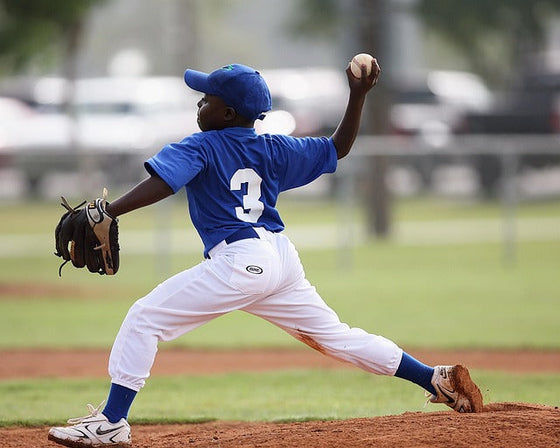by Bobby Woods December 31, 2024

Youth baseball is not just about honing athletic skills, basebal practice is about fostering teamwork, building confidence and keeping players enthusiastic about the game. For many young athletes, their experience on the field shapes their attitude toward sports and teamwork for years to come. While baseball practice fundamentals are essential, creating an environment that is fun and inspiring helps players develop a genuine love for the game. Incorporating interactive drills, imaginative play, and tools like baseball videos can spark excitement and provide visual learning opportunities. To achieve this, coaches need to craft practices that are not only instructional but also engaging and fun. Below are creative practice ideas designed to captivate young players’ attention while enhancing their skills on the field.
Traditional warm-ups can often feel monotonous, which can lead to a lack of energy and focus among young players. To keep them engaged and energized, consider incorporating game-like elements into warm-up routines.
Bobby Woods is a former Chicago Cubs Player & Arizona State University graduate.
For example, relay races with a baseball twist can be a fun and competitive way to get players moving. Divide the team into groups and have them race while carrying or tossing a baseball. Another great activity is target throws, where you set up buckets or hoops at different distances and challenge players to see who can land the most throws.
Additionally, agility drills with bases can help players develop coordination and speed; lay out bases in a zigzag pattern and have players run, shuffle, and slide through them. These activities not only get players physically prepared but also set a positive tone for the practice session, ensuring that they are both engaged and ready to perform.
Breaking your team into smaller groups and rotating them through stations focusing on different skills can make practices more dynamic and effective. For hitting, use batting tees or soft-toss drills to focus on swing mechanics, adding targets for players to aim at for a fun challenge. In the fielding station, practice grounders and fly balls with varied speeds and directions, incorporating competition by awarding points for successful catches.
During the pitching station, provide individualized feedback on form while players practice pitching to a target. For base running, use stopwatches to time runs between bases, encouraging players to improve their speed. Skill stations not only keep practices dynamic but also give each player more opportunities for hands-on learning, helping them develop in different areas of the game.

Children learn best through play, so turning drills into games can help maintain their interest and keep them engaged. For example, in a Home Run Derby, use a wiffle ball and bat to make it easier for young players to hit home runs. This not only builds confidence but also improves batting form.
The Accuracy Throw Challenge is another great activity where you line up targets at varying distances and award points for hitting them, helping players develop precision in their throwing. By adding a competitive but friendly edge to these drills, players stay motivated while learning essential skills.
Teaching game strategy can be challenging, but role-playing makes it easier and more engaging for young players. A simulated inning where the team is divided into offense and defense can help players learn about positioning and decision-making in real game situations.
Baserunning decisions can be taught by creating scenarios, such as a runner on second with one out, and discussing the appropriate actions the baserunner should take depending on the situation. Another effective strategy is using role-playing to teach pitchers how to approach different batters and situations, like pitching with a full count or bases loaded. This gives players the opportunity to think critically and understand the game on a deeper level, beyond just the physical skills required to play.
While improvement is important, making practices enjoyable should always be a top priority. One way to do this is by highlighting replays—when a player executes a skill correctly, have them demonstrate it for their teammates to celebrate and reinforce learning.
Incorporating positive challenges can also keep things exciting, such as encouraging players to try challenging skills like diving for a catch or making a double play in a supportive, non-pressured environment. Additionally, team-building activities, like a team relay, a group cheer, or an informal scrimmage, can end the practice on a fun note. Fostering a positive atmosphere ensures that players feel supported and excited to return to the field, making each session more enjoyable and productive.
Parents can be valuable allies in making practices run smoothly and enhancing the overall experience for players. One way to involve parents is by recruiting them as assistant coaches to help manage stations or run drills, which can ease the workload for coaches. Parents can also be involved as scorekeepers and timers, tracking scores during games or timing baserunning drills.
Parents can serve as motivators by encouraging them to cheer on all players, fostering a sense of camaraderie and support within the team. By staying actively involved, practices become more organized, and players often feel more encouraged, creating a positive and collaborative atmosphere.

Young players are often captivated by technology, and integrating it into practice can be a game-changer. Video analysis can be used by recording swings or pitching motions and reviewing them with players to highlight areas for improvement.
Training apps can track players’ progress in various drills, providing valuable data to measure growth. Additionally, playing upbeat music during warm-ups or downtime can help keep the energy high and maintain excitement throughout the practice. By leveraging technology, coaches can modernize practices and make learning feel more interactive, keeping players engaged while enhancing their development.
Motivation is key for young players, so it's important to acknowledge their hard work and efforts. One way to do this is by giving out weekly awards, such as small trophies or certificates, for qualities like hustle, teamwork, or improvement.
Another effective approach is team shout-outs, where, at the end of each practice, teammates share one positive thing about another player, fostering a supportive environment. Recognizing a Practice MVP—highlighting a player who gave their all during drills or demonstrated leadership—helps reinforce the value of hard work. Recognizing effort in these ways fosters a growth mindset, encouraging players to continue striving to improve and succeed.
Keeping young players engaged in youth baseball requires creativity, energy, and a focus on fun. By mixing skill-building with games, role-playing, and technology, coaches can create an environment where players are excited to learn and grow. When practices are dynamic and enjoyable, young athletes not only develop their skills but also a lifelong love for the game.
Whether you’re a seasoned coach or new to youth baseball, these ideas can help turn every practice into a highlight of the week for your team.
Comments will be approved before showing up.

by Bobby Woods November 26, 2025

by Bobby Woods June 10, 2025

by Bobby Woods April 22, 2025
Sign up to get the latest on sales, new releases and more …

Bobby Woods
Author